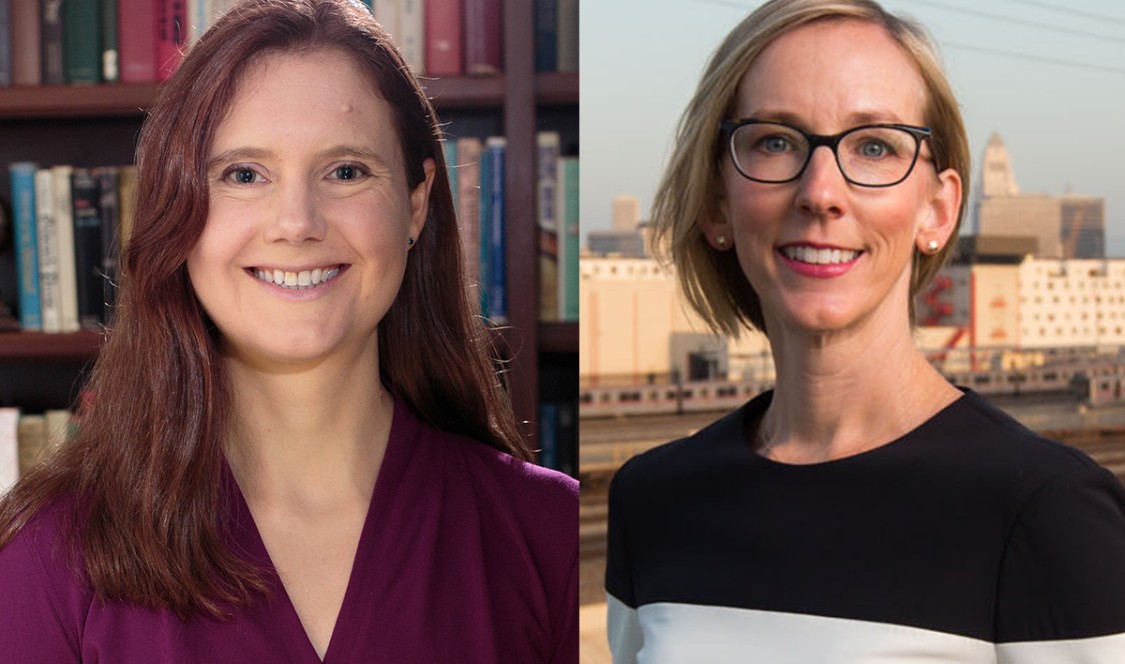Across the CMC curriculum, members of our faculty are meeting the challenge of these unprecedented and historic times, delivering exceptional coursework in a fully online modality for the fall semester. In our Academic Innovations series of faculty Q&As, professors share their curricular highlights, best practices, and how students are helping to shape virtual learning for a memorable, collaborative academic experience.
Mary Evans, the Jerrine and Thomas Mitchell ’66 Professor of Environmental Economics and George R. Roberts Fellow, and Branwen Williams, associate professor of environmental science, are co-teaching “Modeling Climate Change through Economic and Natural Science Lenses” this fall. In addition, Evans will teach “Introduction to Economics” and Williams will teach “Oceanography.”
What are some specific adjustments or additions you are making to your classes this fall?
Prof. Branwen Williams: In putting together “Modeling Climate Change through Economic and Natural Science Lenses,” I’ve enjoyed the process of working with Mary over the summer, developing this new interdisciplinary class and its transition online. It’s been so great to collaborate, and we worked well together.
Spring was a difficult transition and we didn’t have time to adjust, but when I started to think about reinventing the classes, and moving away from the lectures to a more active assignment base, there was a shift in my teaching approach that will persist past this semester.
Prof. Mary Evans: I’ve been thinking a lot more about the process of learning, versus the final way that we typically assess outcomes. We aren’t going to have formal exams in this class. We want students to engage deeply with the material. We thought to accomplish that, we’ll have weekly activities during the semester, culminating in a large class project that they’ll be working on throughout.
For the class group project, students will write a proposal for a set of actions that CMC can take to reduce the carbon footprint on campus, based in part on data from CMC’s energy and water use. In the proposal, the students will discuss benefits and the estimated costs of that action. Their target audience for the final proposal will be the members of CMC ACTS, the College’s sustainability committee.

What learning opportunities are you seeing as a result of this crisis?
ME: There is an ironic aspect to virtually teaching a class on climate change. We’ll be talking about our carbon footprint, asking students to think about how virtual learning versus in-person learning changes one’s carbon footprint as a student. For instance, they are not flying here from their homes across the globe, yet we are using a lot of energy to Zoom all the time. Getting students to recognize that trade-off will be interesting.
What are you most excited about reimagining in terms of a fall teaching experience for students? What gives you confidence?
BW: I want to make my classes more active. I find online teaching lends itself to moving further from the traditional lecture model. I’m using that as an opportunity to move even further from that model by having the students do hands-on data-integrated holistic exercises. In class, I used to say, “Pull out your laptops!” Now, they’ll already be on them and they’ll be able to visualize the data in real-time.
ME: I feel like students are initially shy or reluctant because of the online interface. In contrast to the spring, there will be students we’ve never met before, whom we’ll be meeting for the first time virtually. The fact that Branwen and I have collaborated for so long together, students will see how comfortable we are with each other, and they’ll see the way we interact and teach with each other. I hope seeing that will help them make connections in the virtual space, as well. We can provide that model because we are co-teaching virtually. That gives me confidence.
I’m also looking forward to interacting with students again. The pandemic increases feelings of solitude, so I’m excited to see their faces again even if it is on a screen! I’m yearning for that engagement again with my students.
What aspect of your class do you think your students will most enjoy?
BW: I think they are going to enjoy the interdisciplinary, applied nature of the course, which is a rare opportunity. Over the arc of the semester, the students will leave contemplating new ways to consider climate. They won’t be restricted to looking at a problem from one perspective. Having these conversations across disciplines will be just as important as the course’s content.
ME: At the end of the class, there will be a climate action simulation, a two-day role-playing game. We are bringing in a facilitator from Climate Interactive, who will lead us all through the simulation to come up with a set of proposals that will cap global warming. That exercise and their final project will be capstone experiences for the students to allow them to apply all the knowledge they’ve learned throughout the semester. Branwen and I are also going to be learning along the way!
How do you think CMC and its students are best prepared to adjust to virtual teaching?
BW: The more impactful discussions I’ve had were with students from last spring. We debriefed about how they were feeling. When planning my classes, I really took that to heart to how we can make this a community of learning online.
I’ve been talking with colleagues at other institutions and I’ve learned that our fall semester is going to be different than theirs because we have a smaller class size. I’m thankful to be at an institution with small classes in an online environment, which makes me excited because I will still get to know my students, even in this environment. The community that we are talking about building would be difficult in a large class.
—Anne Bergman

